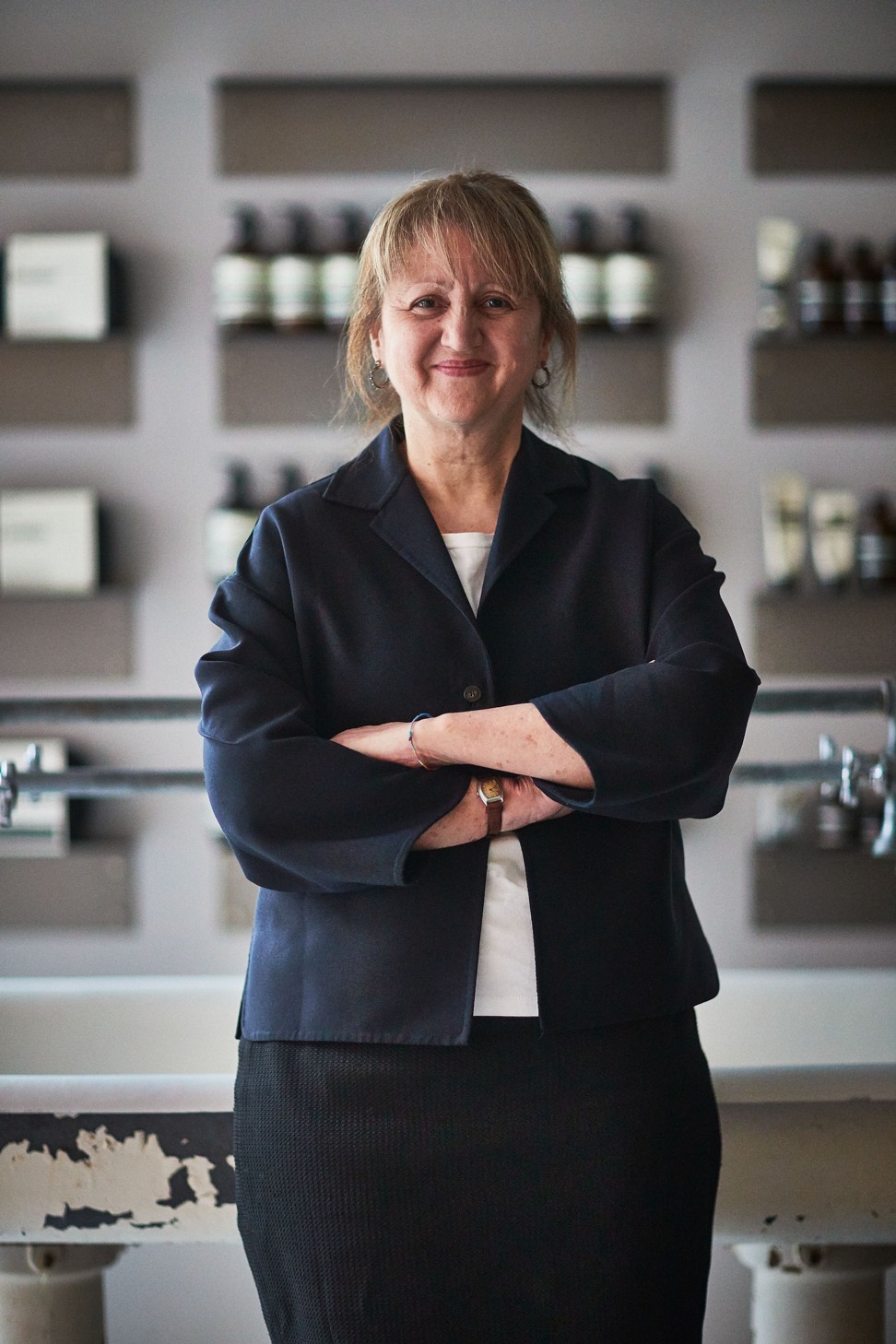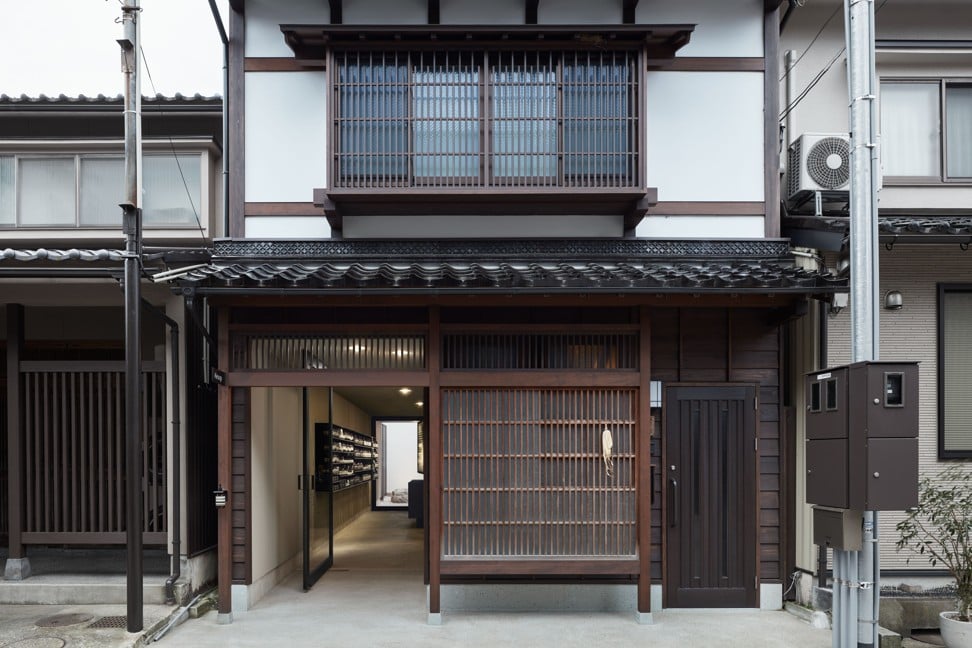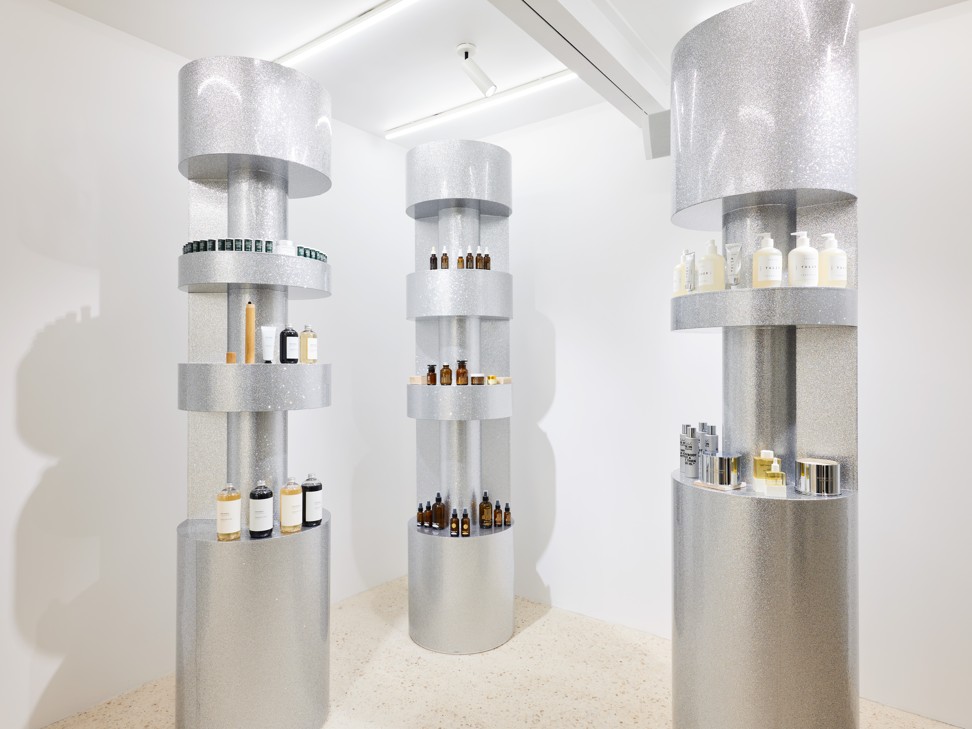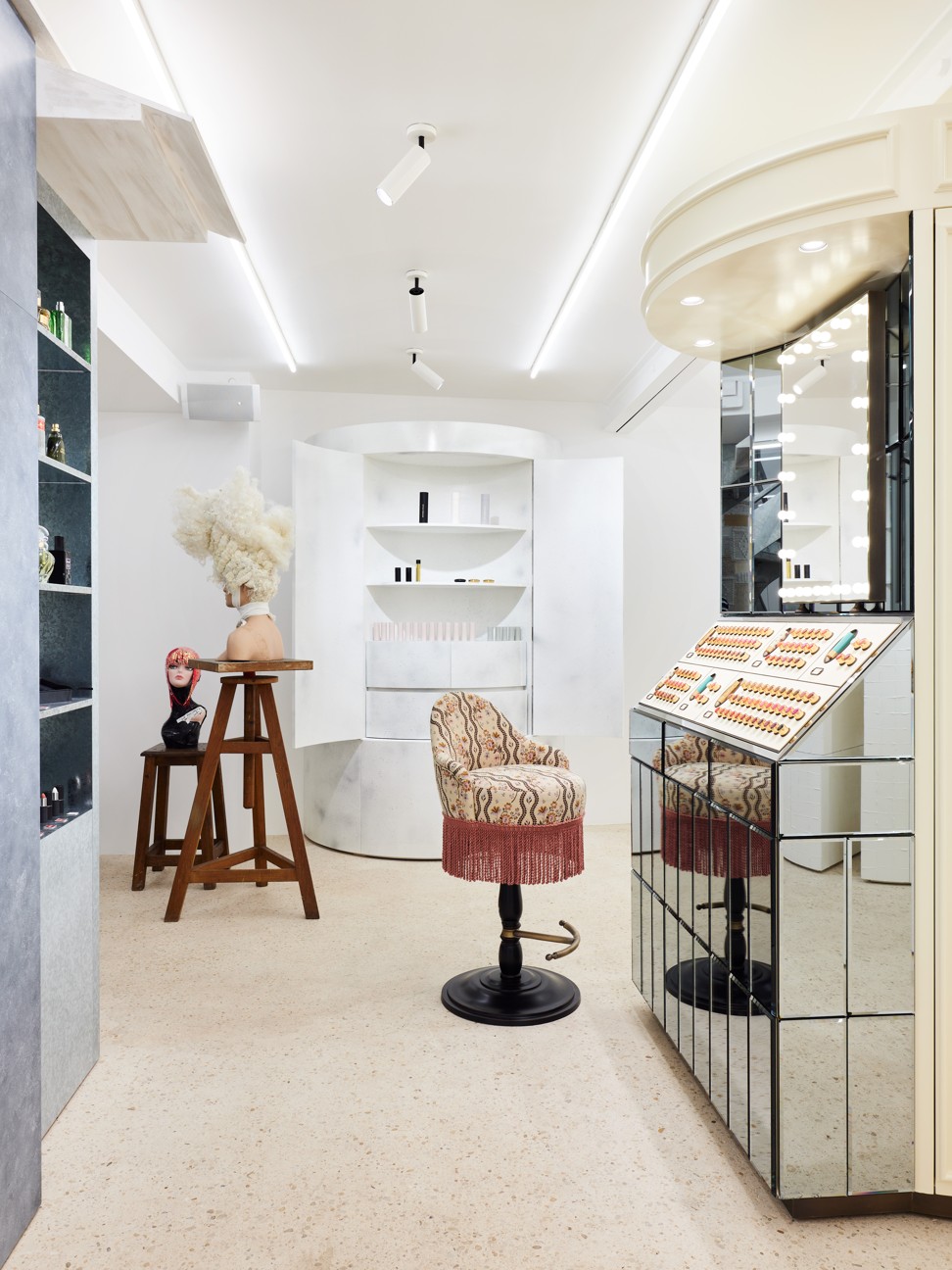
Why in the online shopping era bricks-and-mortar beauty stores aren’t going down without a fight
- In an increasingly digital world, beauty and skincare companies are bringing more to their customers than products
- Brands like Aesop are blending art and design to create an unforgettable shopping experience for consumers in stores
It’s a common sight across Asia all year round – international brands vying for the attention of people with their glossy, seasonal posters and bright lights illuminating their latest products.
A luxury skincare company founded in Australia in 1987, Aesop has long prided itself on its partnerships in art, literature and design, and Neri’s job is to oversee the brand’s global architecture programme.
Aesop stores are each designed to be unique, which is why the brand works with local and regional architecture firms – as well as its own in-house team – wherever it is.

The company begins by researching the chosen location and heritage, Neri says.
“We explore local history, special features of the landscape and its materials, the stories and characters of a particular neighbourhood.”

It’s an unusual approach for a global skincare brand – Aesop, which is now owned by the Brazilian cosmetics group Natura & Co, has more than 200 stores across the world.
From Taipei to New York, though, the architecture of its stores is something that remains a priority, as its bricks-and-mortar spaces embody the brand’s ethos of culture and curation. In Kanazawa, Japan, for example, Aesop worked with Japanese architecture firm Case-Real to restore an Edo-era (1603–1868) town house into a calm, contemporary space with historic bones.
On Hong Kong’s Gough Street, March Studio created a more urban setting for the store there, and the translucent glass brick structures inside echo the city’s vertiginous skyscrapers. Meanwhile, the branch in Singapore’s VivoCity Mall displays credenzas of woven rattan – it was a conscious decision by Aesop and MLKK Studio to use a traditional Southeast Asian craft material.
“We have never been interested in monotonous predictability,” says Neri. “Partnering with different architects around the world supports engaging, locally relevant design and interaction.”
At the same time, Neri adds, all Aesop stores should have common elements. “We aim to provide calm, human environments that nurture the senses, and that feel and smell as good as they look.
“When entering an Aesop space, you are welcomed as a guest in our home, offered tea, conversation and unobtrusive personal service.”

Our approach to shopping for cosmetics, however, has changed.
Consumers now scour online resources for detailed product reviews, or trade tips on websites like Reddit’s SkincareAddiction. Social media, too, drive sales through carefully curated photos.

Despite this, brands like Aesop recognise that the art of the retail experience isn’t dead – in fact, it’s becoming a way to stand out.
“There are many facets to buying beauty that can't be replicated online,” says Grace Wong, a freelance make-up artist and former beauty editor of ELLE Malaysia.
“For example, testing make-up shades against actual skin, feeling the textures of skincare formulas, or even getting to see and hold a luxurious piece of packaging in person.

“Cosmetics are sensorial, so it matters that customers are able to interact with products, to see, touch, smell a product before committing.”
Wong points out that Glossier, the cosmetics company that sprang from digital media brand Into the Gloss, first started selling exclusively online – but later opened stores in New York and Los Angeles, as well as pop-up stores further afield.
Brands know that a truly memorable store experience engages all five senses, but it demands more creativity and artistry than a cookie-cutter kiosk.

Magazine GQ once compared Dover Street Market, a multi-label store for the extremely cool, to a “globe-spanning bizarro department store”. The stores, where the wares are displayed with reverence, can also be experienced almost like art spaces.
In October 2019, the brand opened its first outpost dedicated to cosmetics and grooming in the Marais district of Paris: Dover Street Parfums Market. The design of the store was overseen by Rei Kawakubo, the founder of Comme des Garçons and a designer so iconic that she is celebrated as an artist.
Inside the store, there are no logos, no brand names and no product-led posters. Instead, the store presents a textural and surreal wonderland, where tall pillars loom over people like tree trunks.
The pillars are carved with egg-shaped holes for shelves, and are finished with contrasting materials such as metal, textile and tile. Artist Magda Sayeg’s totem is particularly eye-catching, and is constructed in white yarn.
In these shrine-like spaces, selected brands are carefully elevated, ranging from classic Gucci fragrances to more niche lines like Danish company Sort of Coal’s charcoal-derived grooming products.

“It's the curatorial art and music approach, but with beauty,” says Wong. “It makes sense because the value and meaning of beauty products is actually quite abstract, even more so than fashion.”
Cosmetics are worn on the skin, but culture is worn on the sleeve – and in the beauty and skincare world, we want more to show for our choices than simply the product itself.
A great beauty store promises us transformation, but the best stores seek to reassure us about the people we’ve chosen to be. A fragrance may fade, and a facial cleanser only stays on the skin for mere minutes – but art, architecture, philosophy, music, history? All these represent much more, and prove there’s more to beauty than meets the eye.

